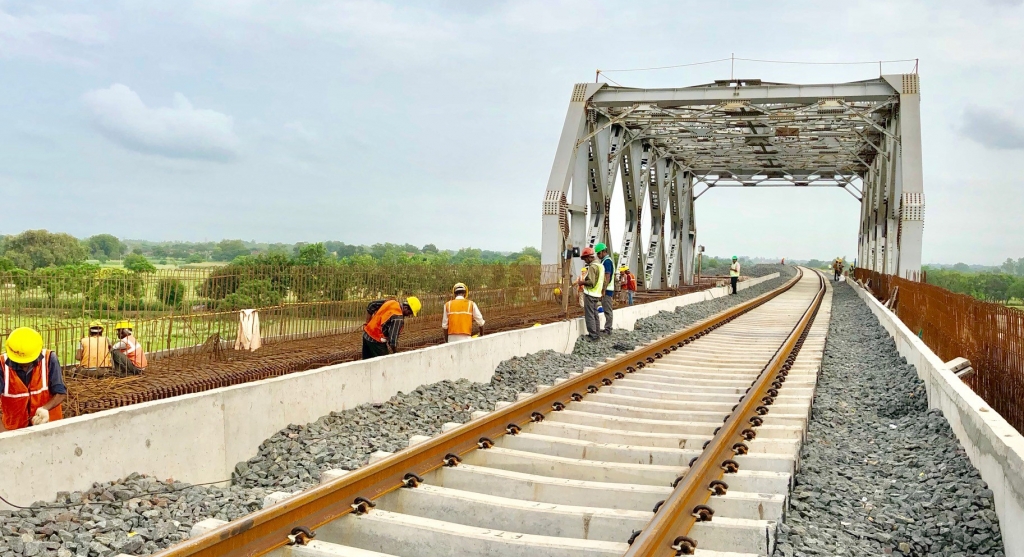How do you build future-proof railways in a changing climate?
As railway systems around the world start confronting the climate challenge, a program in India provides an inspiring example of pro-active adaptation.
O
ver the past 50 years, weather-related disasters have caused some 800,000 deaths globally, and more than $1 trillion in financial losses. Adapting to this new normal will require some serious resources: under a 2-degree warming scenario, the world would need to invest $13-27.5 billion every year to enhance the resilience of existing and new infrastructure. And just like other infrastructure sectors, railways are under increasing pressure from climate risk. In fact, World Bank experts estimate that rail accounts for 18% of the total estimated infrastructure costs.
As railway systems around the world start confronting the climate challenge, India’s Dedicated Freight Corridors program provides an inspiring example of pro-active adaptation. The ambitious, multi-billion dollar program will change the future of transport in the country by creating freight-only railway lines connecting Delhi, Mumbai, Chennai, Kolkata, and other strategic points along India’s “Golden Quadrilateral.” The Eastern and Western Corridors are currently under construction, with the World Bank financing 1193 km of the 1839-km Eastern Dedicated Freight Corridor (EDFC). In a bid to anticipate and minimize the impact of weather events, climate considerations have been factored into the project right from the design phase. The implementing agency and its partners have paid special attention to three types of risks that are of particular concern along the alignment: fog, temperature variation, and flooding.
Fog
Fog prevents train drivers from seeing the track and signals properly, forcing them to reduce their speed. It also poses danger to people crossing live tracks, which is unfortunately a common occurrence in India. To tackle this issue DFCCIL is investing in the European Train Control System (ETCS) and would like to add track fencing in high risk areas. Thanks to an advanced communications systems between track signals and the train cab, ETCS Level 1 enables trains to keep running safely at their normal speed even in poor visibility conditions.
Temperature variation
India’s extreme temperatures can affect rail infrastructure in multiple ways, from rail buckling and fracturing to tensile stress. In consultation with the India Meteorological Department (IMD), the project team will define critical temperature thresholds, and identify which emergency actions to take when a specific threshold is reached. In the future, DFCCIL would like to shift toward a “predict and prevent” model, using measures such as preventive grinding and milling to minimize the effects of temperature variation. Eventually, sensors may be installed directly on the tracks to monitor rail stresses in real time and implement an early warning system.

Construction work on India’s Eastern Dedicated Freight Corridor. Photo: Joe Qian/World Bank.
Flooding
Flooding is an important concern in India, with 4.84 million people affected by river floods every year. Running along two major rivers, the Yamuna and the Ganga, the EDFC certainly won’t be immune to flood risk. A set of reliable studies is planned as a first step to lay out appropriate measures. With that as a basis, flood inundation maps, site specific design flood estimates and critical thresholds can be defined. Especially in that matter international best-practice shows that a close collaboration with the national meteorological service is essential. DFCCIL intends to follow these recommendations and to incorporate climate allowances in building standards.
The objective of the Dedicated Freight Corridors program is to provide India with a high-capacity, sustainable freight transport network for decades to come. This cannot happen without a solid climate adaptation plan that will anticipate extreme weather events, minimize disruptions, and ensure the new infrastructure can stand the test of time. In light of DFCCIL’s hands-on approach to climate adaptation, it looks like India is definitely on the right track.
The development of the new railway corridors is being led by the Dedicated Freight Corridor Corporation of India (DFCCIL). The Global Facility for Disaster Reduction and Recovery (GFDRR) is providing technical support on climate adaptation under the Japan-World Bank Program for Mainstreaming Disaster Risk Management.
The ideas presented in this article aim to inspire adaptation action – they are the views of the author and do not necessarily reflect those of the Global Center on Adaptation.